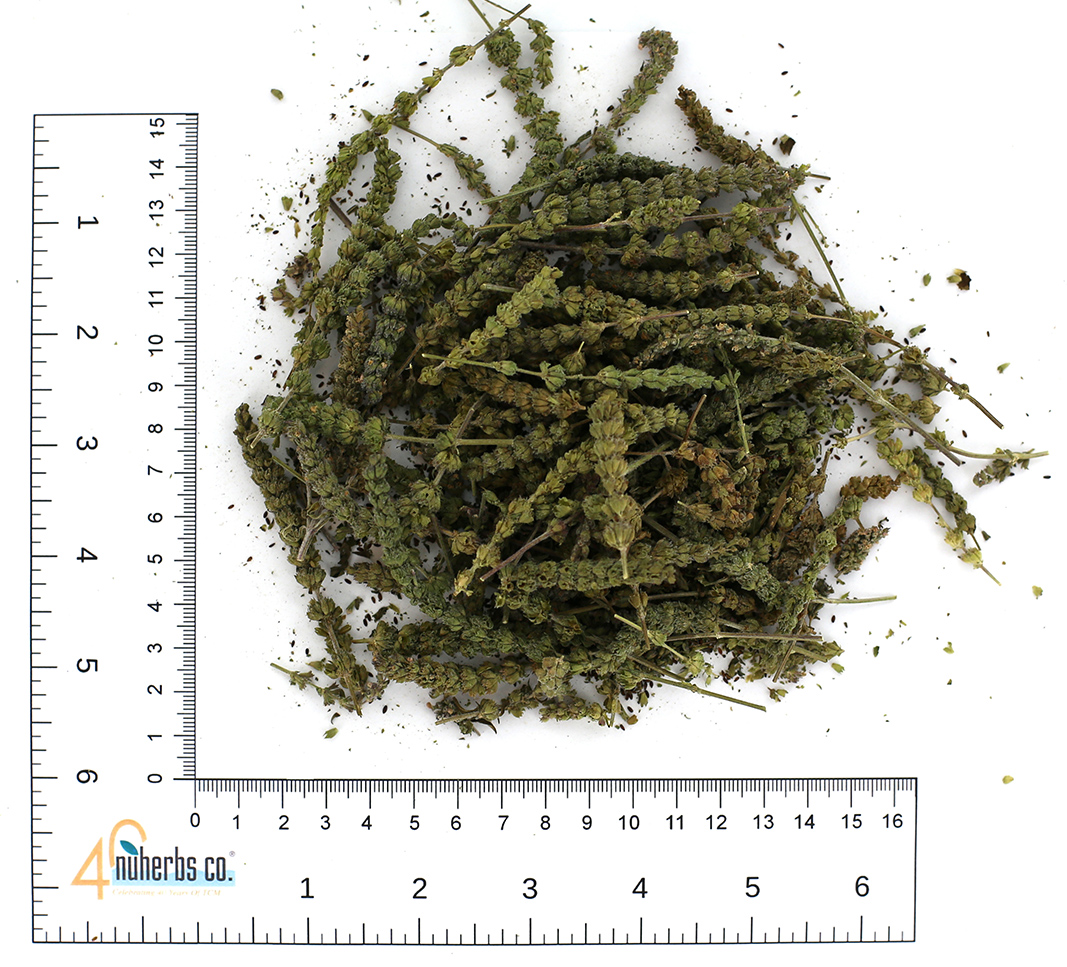Single Herb Glossary
Jīng Jiè 荊芥

| Pharmaceutical name | Schizonepetae Herba |
| Category | Warm, Acrid, Release the Exterior |
| Key Properties | Harmonious: aromatic & acrid, but not excessively; Slightly warm, but not drying; Light, ascending properties allow use for both Wind-Heat & Wind-Cold; Vent Wind-Heat from blood |
| Properties | Acrid Slightly warm |
| Tropism | LU, LV |
| Actions & Indications | 1) Release Exterior & dispels Wind ( Exterior Wind, Wind-Cold or Wind-Heat) 2) Vents rashes & alleviates itching - early stage measles, pruritic skin eruption, Carbuncles/ boils 3) Stops bleeding (Charred) (i.e. bloody stool, uterine bleeding) |
| Dosages | 4.5-9 g Cook last 10 min |
| Contraindications (TCM) | CI: Def. of the exterior, fully-erupted measles or open sores, absence of pathogenic wind of any kind, perspiration due to non-Wind etiology, such as Wei Qi def or Yin Def Heat. Consuming fish, crab, goose, duck may increase itching. |
| Contraindications (Western) | |
| Chemical Composition | Essential oils 0.43-2.05% (menthone, pulegone, isomenthone, isopulegone, limonene), schizomodiol, schizonepetoside A-E |
| Pharmacological Effects | • Antipyretic & diaphoretic: in rabbits with artificially induced fever • Antibiotic: antimicrobial effectiveness against S. aureus, C. diphtheria, B. anthracis, β-streptococcus, Salmonella typhi, B. dysenteriae, Pseudomonas aeruginosa, B. tuberculi • Hemostatic: especially Tan Jing Jie, in mice and rabbits • Analgesic: in decoction • Respiratory: essential oils have bronchodilating effects |
| Herb-Drug Interactions | |
| Classical Formula(s) |
This information is a reference tool for Chinese herbal studies. It is not intended to replace professional medical advice. Please consult a primary health professional if you require health advisory.
